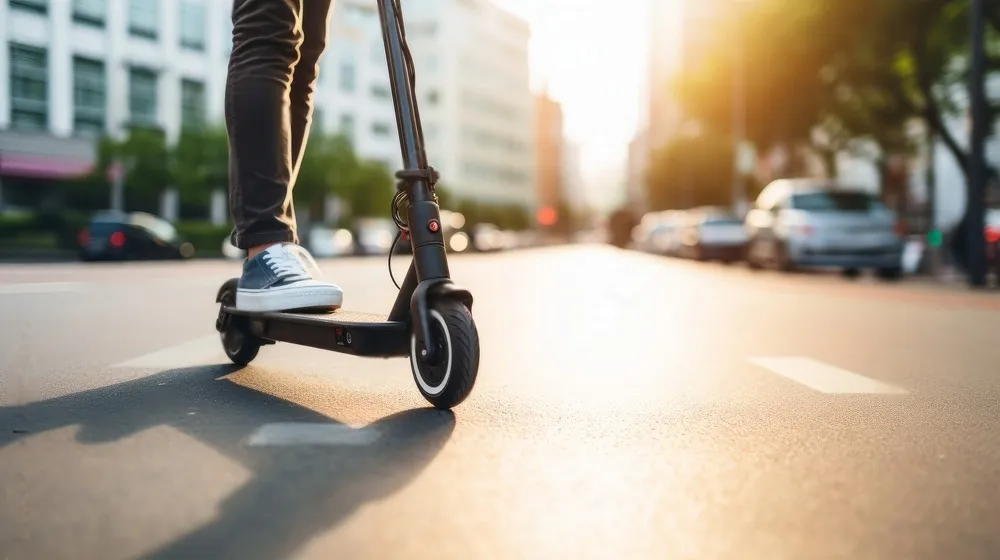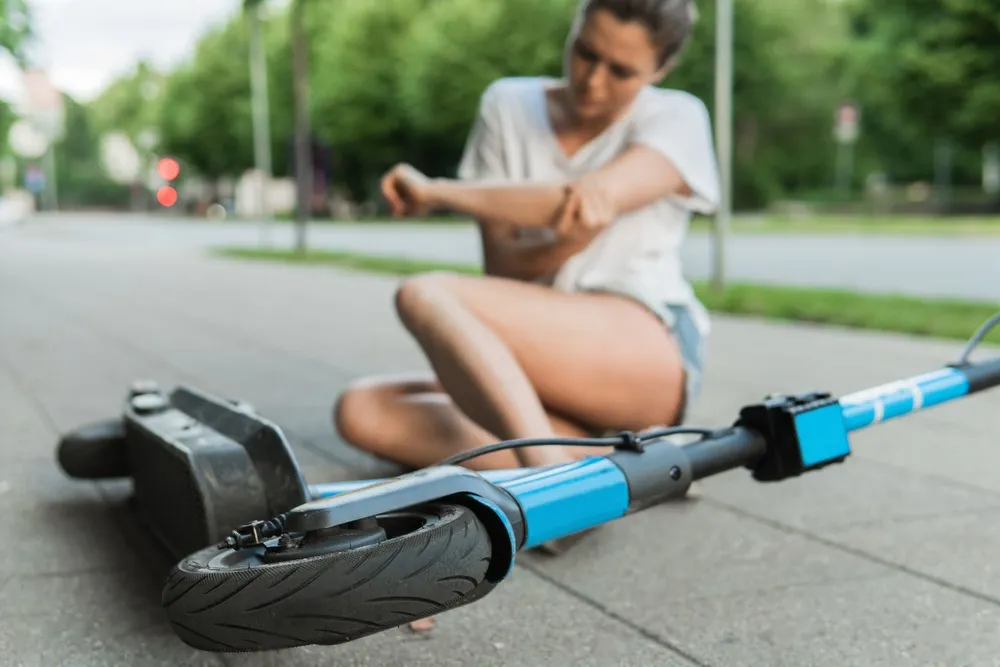You’ve likely noticed a 32% spike in urban traffic incidents involving e-scooters last year. As you zip through city streets, the convenience and accessibility of these nimble vehicles have revolutionized your daily commute.
However, with their rise, there’s a growing concern for your safety and that of pedestrians. You’re now navigating a new landscape where e-scooters are not just a novelty but a significant element in traffic dynamics.
The regulation and integration of these devices into your city’s transport ecosystem are evolving, aiming to safeguard your well-being. As you consider hopping on an e-scooter, you must recognize your role in this shifting paradigm and the collective efforts needed to minimize accidents and enhance urban mobility for everyone’s future.
→ Take time to read our different articles that could interest you.
–Aggressive Driving: How To Avoid Dangerous Drivers
–Can Airbag Deployment Cause Injury in an Accident?
–How Much Can You Sue for a Car Accident?
–Cutting Through a Parking Lot: Legal or Illegal?
Visit our blog now!
Key Takeaways
- E-scooters have become increasingly common in cities, and their usage is rising.
- Accidents involving e-scooters have also increased, leading to a rise in emergency room visits for fractures, head injuries, and contusions.
- Rider inexperience, unpredictable pedestrian behavior, poorly designed urban infrastructure, and interactions with other vehicles contribute to e-scooter accidents.
- The regulatory landscape is evolving with the implementation of age restrictions, speed limits, mandatory helmets in certain jurisdictions, and the use of geofencing technology.
The Rise of E-Scooters
You’ve likely noticed that e-scooters have rapidly become common in city landscapes, weaving through traffic and parked on sidewalks. This isn’t just an anecdote; data shows a significant uptick in their presence. Studies indicate that e-scooter usage has surged, with some cities reporting thousands of trips daily. This rise is attributed to their convenience and the expanding infrastructure supporting them.
However, this increase isn’t without consequences. Statistically, e-scooters have introduced new variables into urban traffic patterns. Accidents involving these devices are rising, with emergency room visits escalating. It’s crucial to dissect the numbers to understand the risks and develop strategies to integrate e-scooters safely into the urban transit ecosystem.
Safety Concerns and Statistics
Accident statistics reveal that e-scooters are more likely to cause safety issues now than ever before. As their popularity surges, so does the frequency of related accidents. Rigorous data analysis indicates a trend where integrating e-scooters in urban centers correlates with an uptick in emergency room visits for fractures, head injuries, and contusions.
To give you a clearer picture, consider the following table summarizing recent findings:
| Injury Type | Percentage Increase |
| Head Injuries | 32% |
| Fractures | 40% |
| Contusions | 27% |
| Other Injuries | 15% |
These figures are a stark reminder that with the convenience of e-scooters comes the responsibility to address their inherent safety challenges.
E-Scooter Accident Dynamics
While navigating the city streets, it’s crucial to understand that e-scooter accidents often occur due to a complex interplay of factors, including rider inexperience, pedestrian behavior, and urban infrastructure. Here are key elements that influence these dynamics:
- Rider Inexperience: Lack of skill can lead to loss of control.
- Pedestrian Behavior: Unpredictable movements can cause collisions.
- Urban Infrastructure: Poorly designed streets may increase risk.
- Vehicle Interactions: Cars and bikes sharing the road with e-scooters can lead to accidents.
- Maintenance Issues: Faulty e-scooters are more prone to malfunction.
Analyzing accident reports and hospital data reveals patterns essential for developing safety measures. It’s not just about your awareness but understanding the broader context that shapes e-scooter safety on the roads.

Regulatory Landscape Evolution
Addressing the complexities of e-scooter accidents, regulators have begun to reshape the legal framework governing their use in urban environments. Cities have implemented age restrictions, speed limits, and designated parking areas to enhance safety and order. Helmets are now mandatory in certain jurisdictions, reflecting an increased awareness of the risks involved.
Evidence-based policies are emerging, guided by accident statistics and user behavior data. For example, geo-fencing technology restricts e-scooters from operating in specific zones, reducing the likelihood of pedestrian conflicts. Licensing requirements are tightening, with operators needing to demonstrate knowledge of traffic laws.
This evolving regulatory landscape aims to balance the benefits of e-scooters with public safety concerns, ensuring these vehicles integrate smoothly into the urban traffic ecosystem.
Future Outlook and Solutions
You’ll see cities adopting innovative technologies and robust policies to mitigate the risks associated with e-scooters in urban traffic. You’ll likely witness a data-driven approach to enhance safety and integrate e-scooters seamlessly into the urban tapestry. Consider these key solutions:
- Enhanced Geofencing: Restricting e-scooter access in high-risk areas.
- Smart Helmets: Encouraging use through connectivity features.
- Rider Education Programs: Focused on safety and traffic regulations.
- Data Sharing Initiatives: Between cities and e-scooter companies for improved planning.
- Infrastructure Improvements: Designing roads to accommodate e-scooters safely.
These measures, backed by empirical evidence, aim to reduce accidents and facilitate a harmonious coexistence between e-scooters and other modes of urban transportation.
Whenever You Need, You Can Always Get The Support From 1-800-ASK-GARY
1-800-ASK-GARY is a 24/7 complimentary helpline for individuals involved in motor vehicle accidents, including cars, commercial trucks, and motorcycles. Our team of specialists is available to assist those injured in such incidents at any time of day. Furthermore, we will directly connect you with a medical or legal expert who can support you in the aftermath of the accident.
→ Call us at (1-800-275-4279)
Our Services:
Frequently Asked Questions
How Do E-Scooter-Related Injuries Compare to Those Sustained in Bicycle or Pedestrian Accidents?
You’ll find that e-scooter injuries often involve head trauma, similar to bike accidents. However, e-scooters result in more severe injuries compared to pedestrian incidents, largely due to their speed and exposure.
What Are the Typical Costs Associated With Medical Treatment for E-Scooter Accident Injuries?
You’ll find that e-scooter injury treatment costs vary widely. Still, often, they’re less than car accidents yet can exceed bicycle-related injuries due to fractures and head traumas requiring advanced medical care.
How Has the Presence of E-Scooters Impacted Public Transportation Usage in Urban Areas?
You’ve likely noticed a shift in urban transit patterns; e-scooters are reducing bus and train ridership as people opt for these convenient, fast alternatives for short, solo trips across the city.
Are Any Psychological Effects or Trauma Observed in Individuals Involved in E-Scooter Accidents?
You may experience psychological effects, such as anxiety or PTSD, after an e-scooter accident, similar to any vehicular incident, supported by data on trauma from road accidents. It’s crucial to seek professional help.
How Do Weather Conditions Affect E-Scooter Accident Rates and Severity?
Weather conditions greatly impact your e-scooter accident risks and severity; wet, icy, or foggy conditions can increase the chances of slips and reduce visibility, leading to more frequent and potentially more severe incidents.
Conclusion
You’ve seen e-scooters’ popularity surge, but with it comes a rise in accidents. Data shows they’re not just nuisances but a genuine urban safety challenge.
As regulations evolve, you’ll notice a push for safer practices. Solutions like improved infrastructure and rider education aren’t just hopeful; they’re necessary.
You must recognize e-scooters’ potential for a sustainable future and address the risks with data-backed strategies.
The road ahead is about balance and foresight.


